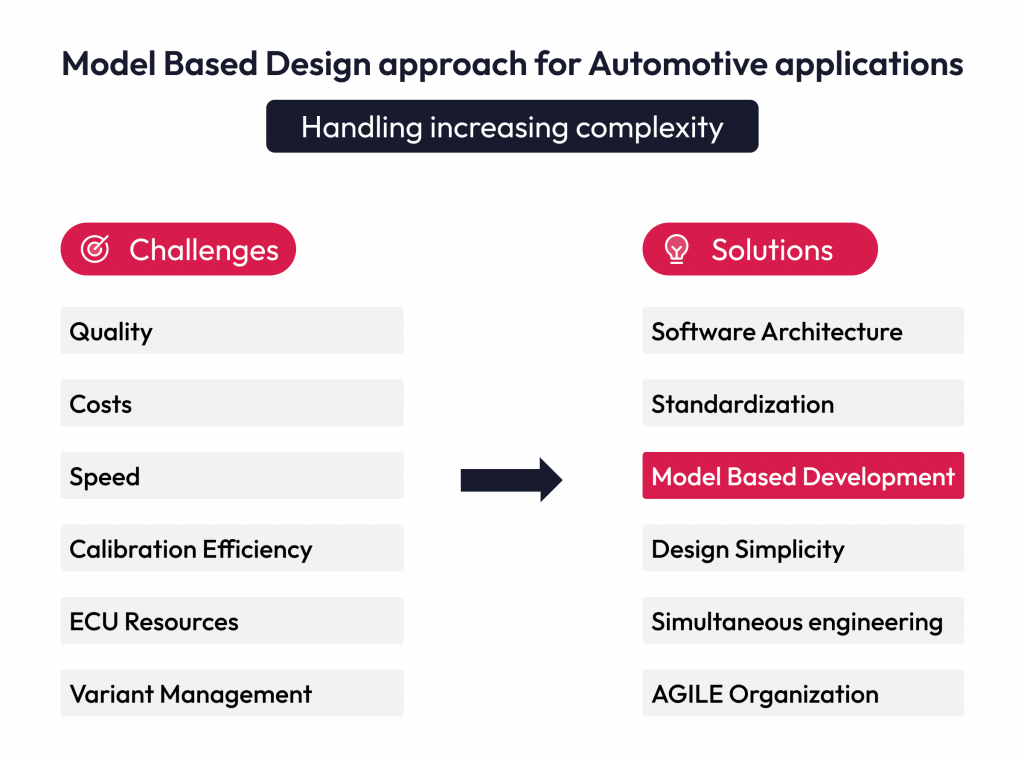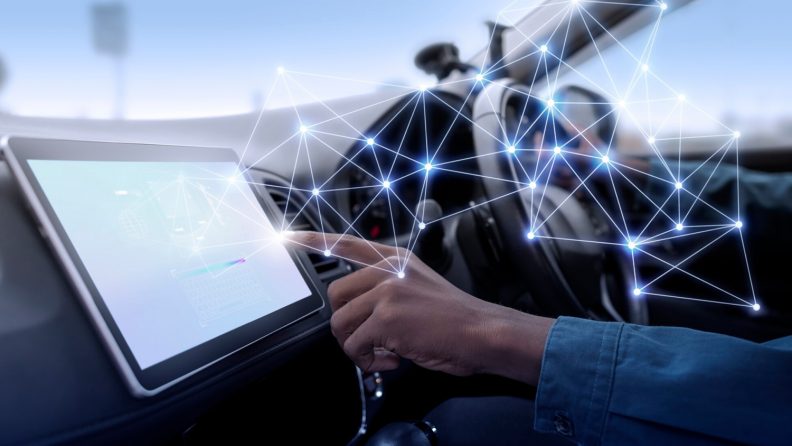Cars have long conveyed basic information to drivers, like a warning light for low fuel or a door-ajar alert. But Vehicle-to-Everything (V2X) communication takes this a step further by enabling real-time “conversations” among cars, pedestrians, bicycles, road signs, and traffic signals.
The result?
- More energy-efficient driving
- Enhanced safety
- Better user experiences
However, building these complex systems demands an innovative approach, one that Model-Based Design (MBD) with MATLAB and Simulink delivers exceptionally well.
Vehicle-to-Everything (V2X) communication
V2X communication is critical for achieving:
- Safety: vehicles can instantly share alerts on road hazards, emergency braking, or adverse weather conditions, thereby reducing collisions.
- Traffic efficiency: integrating vehicles with infrastructure (V2I) helps manage traffic signals, easing congestion in busy urban areas.
- Environmental benefits: smarter route planning and efficient driving patterns cut fuel consumption and emissions.
- User experience: through Vehicle-to-Network (V2N) integration, drivers benefit from advanced infotainment, navigation, and cloud-based services.
To ensure these benefits, V2X systems must reliably manage data exchange in shifting road environments, adhere to stringent industry standards, and integrate seamlessly with the vehicle’s Electronic Control Units (ECUs).
Why Model-Based Design for V2X?
Model-Based Design employs models as the central artifacts throughout the development cycle. From concept and simulation to deployment and verification.
MATLAB and Simulink offer a robust toolkit for V2X development because they enable:
- Rapid prototyping: engineers can quickly design V2X algorithms and test them in virtual environments.
- System-level simulation: simulink helps integrate vehicle dynamics with V2X models, facilitating holistic evaluations of communication and control strategies.
- Code generation: automated production of C/C++ code ensures that validated models can be seamlessly deployed to embedded hardware.
- Standards compliance: built-in support for IEEE 802.11p (DSRC) and cellular V2X (C-V2X) helps meet regulatory and interoperability requirements.

Development workflow for V2X using MBD
Requirements analysis
- Define system requirements based on V2X standards and real-world use cases (e.g., collision avoidance, traffic light prioritization).
- Track and manage requirements using tools like MATLAB Requirements Toolbox.
System modeling
- Create high-level models of V2X communication protocols, such as DSRC or C-V2X, in Simulink.
- Model application layers (e.g., cooperative awareness messages) and physical layers (e.g., radio wave propagation).
Simulation and testing
- Validate system behavior under realistic conditions (e.g., urban intersections, highway platooning).
- Employ MATLAB’s communication toolboxes to replicate wireless channel impairments, ensuring robust performance in variable environments.
Code generation and integration
- Automatically generate optimized C/C++ code using Simulink Coder or Embedded Coder.
- Integrate the generated code with ECUs for thorough in-vehicle testing.
Hardware-in-the-Loop (HIL) testing
- Evaluate the system on actual hardware in real-time, verifying performance across various operating conditions.
Deployment and validation
- Deploy the final V2X system onto the vehicle’s hardware platform and conduct on-road testing to confirm reliability and compliance.
Realizing the benefits
By embracing MBD with MATLAB and Simulink, automotive engineers can:
- Reduce development time: early detection of design flaws through simulation significantly cuts down on late-stage rework.
- Enhance reliability: rigorous testing at each stage fortifies overall system resilience.
- Streamline collaboration: unified models create a shared, accessible framework for diverse teams spanning software, hardware, and systems engineering.
- Facilitate scalability: modular structures make it easier to adapt V2X solutions for different vehicle classes and communication technologies.
Conclusion
As connected vehicles continue to redefine modern transportation, Vehicle-to-Everything (V2X) communication stands at the forefront of safer, more efficient mobility. Leveraging Model-Based Design with MATLAB and Simulink enables engineers to navigate the inherent complexities of V2X development with greater precision, ensuring these advanced systems meet the evolving demands of tomorrow’s automotive landscape.
Developing effective V2X solutions for connected vehicles requires not only a solid command of Model-Based Design but also in-depth expertise in automotive engineering. At Robosoft, we combine our extensive automotive experience with Model-Based Design (MBD) capabilities to streamline the entire V2X development lifecycle. Explore our Core Engineering solutions to bring your connected mobility vision to life.






